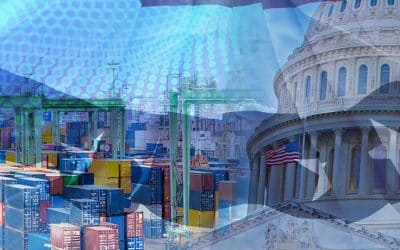What can we expect from central banks in 2022?

Redacción Mapfre
With inflation on the rise, the expansion of the omicron variant and the rise in the price of energy products that seem not to have come to an end, the main central banks ended the year with key meetings in which they announced a new direction for monetary policy.
Rate hikes in the U.S.
The first central bank to let its voice be heard was the Federal Reserve, which said that it will tighten its monetary policy by tapering its stimulus program by 30 billion dollars a month. In this regard, MAPFRE Economics believes that this plot twist rests on “a solid labor market, a steadily expanding economy and a concomitant level of inflation.”
Benchmark interest rates remained unchanged in the range between 0% - 0.25%. However, the Fed did signal a rate hike, specifically three hikes by 2022 and another three by 2023.
Beyond the new measures announced, Gonzalo de Cadenas-Santiago believes that “we are still not seeing the structural effects on inflation, which are those associated with the effects of monetization, the relocalization of production and the internationalization of costs.” In a special “Central Banks” discussion organized by Radio Intereconomía in which the expert participated together with Enrique Mazaruela, from the University of Comillas, Rui da Mota, from Afi, and Alexis Ortega, from Finagentes Gestión, he nevertheless said that these price pressures are still dominated by “the increase in energy costs, pent-up demand for consumer goods to the detriment of services, along with bottlenecks whose ability to come up for a breath of air continues to be intermittent and uncertain.”
End of pandemic bond program in Europe
For its part, the ECB, under the leadership of Christine Lagarde, announced that interest rates will remain unchanged (0% for loan facilities and -0.5% for deposit facilities). Nevertheless, the ECB signaled that it will taper the pandemic emergency purchase
program (PEPP), which it could reduce to 10 billion euros a week until March 2022, while “cushioning the effect by reinforcing the conventional asset purchase program (APP) up to 40 billion euros a month during the second quarter and decrease to 30 billion from the third quarter.”
Along the same lines, the expert from MAPFRE Economic Research believes that the ECB will not announce a rate hike “either next year or the following year,” and that the markets “are getting confused by not seeing the effects that inflation is going to have in the long term.” Even so, with price levels on the rise, MAPFRE Economics notes that the basis for the increase in prices “is still considered transitory, although of a more lasting nature than anticipated.” “This persistence is mainly due to exogenous factors, such as energy shock and global supply problems, with endogenous factors being of a far more limited nature,” he concluded.



